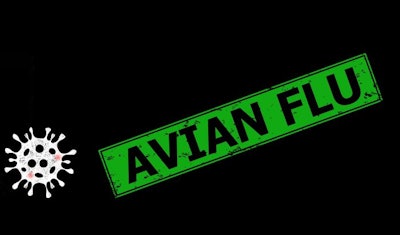
Four new cases of highly pathogenic avian influenza (HPAI) in Ecuador, including one commercial egg laying operation, are identified in a new report from the World Organization for Animal Health (WOAH).
In the hamlet of Zumbalica, a commercial layer flock had been experiencing high mortalities, with 9,050 hens in a flock of nearly 17,000 had died. Testing was done at the Agrocalidad laboratory, where it was confirmed that these hens had contracted H5N1 avian influenza.
The remaining 7,812 birds in the flock were depopulated, while the property was quarantined and disinfection procedures have begun. Other control measures applied include zoning, traceability, screening, and movement control.
The WOAH report also noted three cases of HPAI in backyard flocks in Ecuador. Those cases were located in Laigua De Bellavisita, Barrio Guanguibana and Pueblo Viejo. Collectively, 41 birds were lost at those farms.
Prior to these cases, Ecuador had six commercial poultry farms affected by HPAI. All of those were either identified as layer farms or affiliated with layer farms.
To date, Ecuador has lost approximately 1.19 million birds to HPAI. In addition, a nine-year-old girl in Ecuador has also tested positive for HPAI.
HPAI now in backyard flocks in Argentina
Less than a week after WOAH announced a case of HPAI in a single Andean goose in Argentina, the organization reported the virus has also been detected in two backyard flocks in the country.
In one case, two chickens, which had earlier been acting lethargic, died in the town of Salta. Eighteen other susceptible birds on the premises were depopulated.
The other case involved a backyard flock that involved “hens living with pheasants and ducks,” the WOAH report stated. Three birds died on this property.
Control measures applied include zoning, surveillance and movement control.
Uruguay has first case
WOAH also reported that HPAI has been confirmed for the first time in Uruguay.
Following surveillance carried out by the General Directorate of Livestock Services on February 14, the Park Ranger Service of the National System of Protected Areas (SNAP) reported dead black-necked swans in Laguna Garzón, between the departments of Maldonado and Rocha. The animals were sampled and buried on site. Samples were sent to an official laboratory. Detection of influenza A virus matrix protein gene was performed by real-time RT-PCR as part of screening and two samples were positive. Then, H5 gene detection was performed by real-time RT-PCR and the results were positive.
In the area where the event occurred, active surveillance will be carried out within a 5-kilometer radius. A health emergency was declared throughout the country, restricting movements within the national territory of backyard poultry and birds that are not controlled through the poultry monitoring system. Fairs, auctions, exhibitions and poultry-related events were suspended.
To date, the following South American countries have had confirmed cases of HPAI: Argentina, Bolivia, Colombia, Peru, Ecuador, Venezuela, Uruguay and Chile.
Read our ongoing coverage of the global avian influenza outbreak.


















